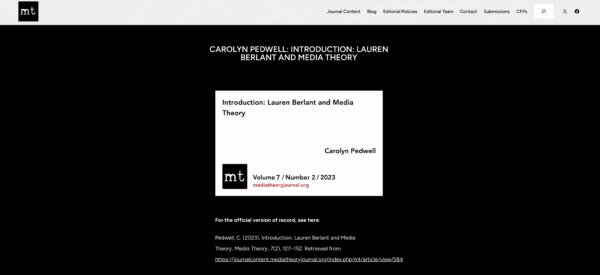Introduction: Lauren Berlant and Media Theory (2023)

Header image generated using the Flux AI model and prompts that explore Ai concepts and historical figures.
In this Introduction to our special section on ‘Lauren Berlant and Media Theory’, I argue, with our contributors, that both appreciating and extending Berlant’s vital contributions to media theory requires addressing the distinctive place of ‘mediation’ in her/their writing.
In this Introduction to our special section on ‘Lauren Berlant and Media Theory’, I argue, with our contributors, that both appreciating and extending Berlant’s vital contributions to media theory requires addressing the distinctive place of ‘mediation’ in her/their writing. The first section addresses the challenges and potentialities of efforts to position Berlant within existing genealogies of media theory, with particular attention to their work on affective genres, scenes, cases, and attachments. The second section explores the shifting relations among infrastructure, data politics and the making of media theory that Berlant’s capacious mode of cultural critique helps us sense and make sense of – with a focus on intimacy-infrastructure entanglements, whether with respect to the ‘inconvenience’ of networked media and AI or the affective possibilities of collaborative projects of writing otherwise. What constitutes Berlant’s most profound lesson concerning what it means to live lives immanently mediated by aesthetic-material forms, genres, and infrastructures, I conclude, is that friction, vulnerability, and ambivalence, are our vital animating conditions – and how we negotiate them personally and collectively is both a matter of survival and an affective-political art.
Pedwell, C. (2023). Introduction: Lauren Berlant and Media Theory. Media Theory, 7(2), 127–152. https://doi.org/10.70064/mt.v7i2.584
